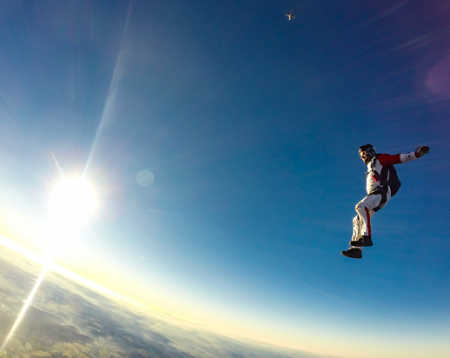December 13, 2017 – Boeing has thrown down the gauntlet as Grand Sponsor of Go-Fly, a competition to invent a device that will make people look to the sky and say “that person is flying.”
The total prize amounts to $2 million U.S. to be awarded over a 24-month competition. The hoped-for result will be the invention of pure human flight.
Here are some of the milestones and awards that entries can win.
- You must register to compete for Phase 1 awards by April 4, 2018, with submissions due April 18, 2018.
- Phase 1 awards of $20,000 will be given out on May 29, 2018, to ten individuals or teams for meeting the objectives in written technical specifications.
- Phase 2 registration will be December 8, 2018, with a submission deadline of February 6, 2019. Four $50,000 prizes to the best vertical-takeoff-and-landing (VTOL) demonstration will be awarded March 28, 2019.
- Then Phase 3 will ensue with a flight readiness review scheduled for sometime in September 2019 and final fly-off in the following October. The grand prize winner will receive $1,000,000 by demonstrating the flight of an ultra-compact near-VTOL device capable of traveling 32 kilometers (20 miles) without refueling or recharging.
- Two additional prizes of $250,000 will be awarded to an entry that is the quietest, and one that presents the smallest form factor.
- And one additional prize of $100,000 will be given for the entry that represents the most disruptive advancement in the “state-of-the-art.”
The competition is not open to Boeing employees. Individuals and teams that enter the competition will be given access to aerospace and business experts covering design, engineering, finance, law, and marketing issues. DARPA, NASA, Boeing, Lockheed-Martin, University of Maryland, University of Pennsylvania, Clark School of Engineering, Sikorsky Aircraft, Bell Helicopter and many others are lending expertise to provide mentorship to those individuals or teams that enter the competition. And any proprietary information shared with these experts, mentors, or the judging panel, throughout the competition, will be held in confidence. And any plans, schematics or inventions will remain the intellectual property of the individuals or teams that present them.
When all is done, what will see? The individual who operates the invention may stand or sit on it, or wear it like a backpack, or hang beneath it. We could see a jet pack, a hoverboard like the one in Back to the Future, a drone with a human attached like a flying sky crane, or a flying motorcycle, or something entirely unexpected.
Does the inventor have to fly the device? No. The rules state a mannequin can be used that weighs the equivalent of a 90-kilogram (200-pound) person.
Two other caveats.
- The individual or mannequin flying the device must “not endure extreme sustained g-forces greater than 5 g.” In other words, there should be safety considerations in whatever is designed with no hard landings.
- The invention must comply with Federal Aviation Administration (FAA) rules. Those rules specify that an invention like this can weigh no more than 115 kilograms (254 pounds), and fly no faster than 101.4 kilometers (63 miles) per hour. In nautical terms that amounts to 55 knots.
Why is this possible now? Because technology breakthroughs in materials, in 3D printing, in batteries, and in software are making a personal flying device doable.
And what does Boeing get out of this other than the publicity? A company spokesperson describes Go-Fly as a sponsorship that can help identify new talent. A marketable personal flying device could have numerous applications. So this is far more than just a novelty.









